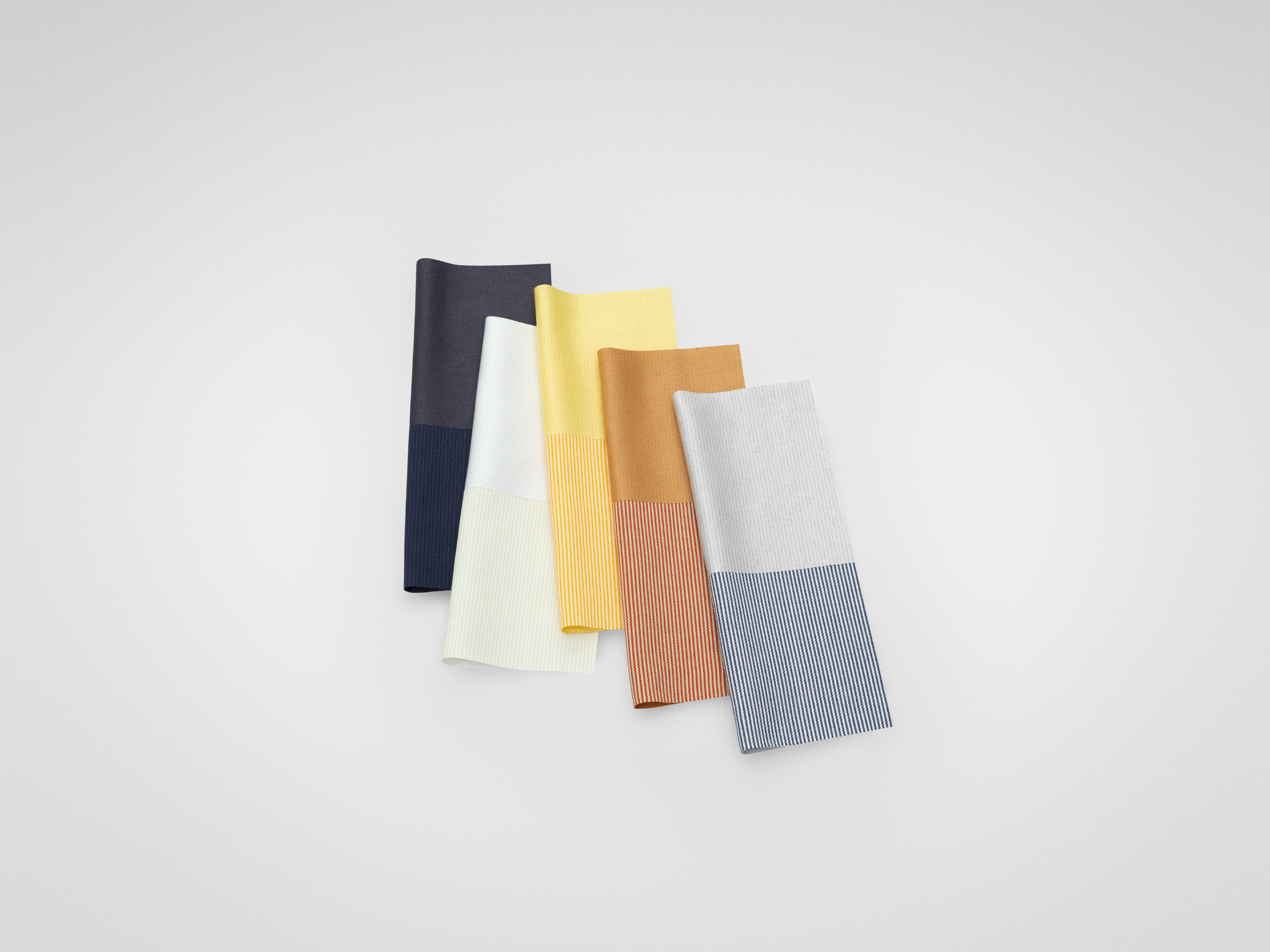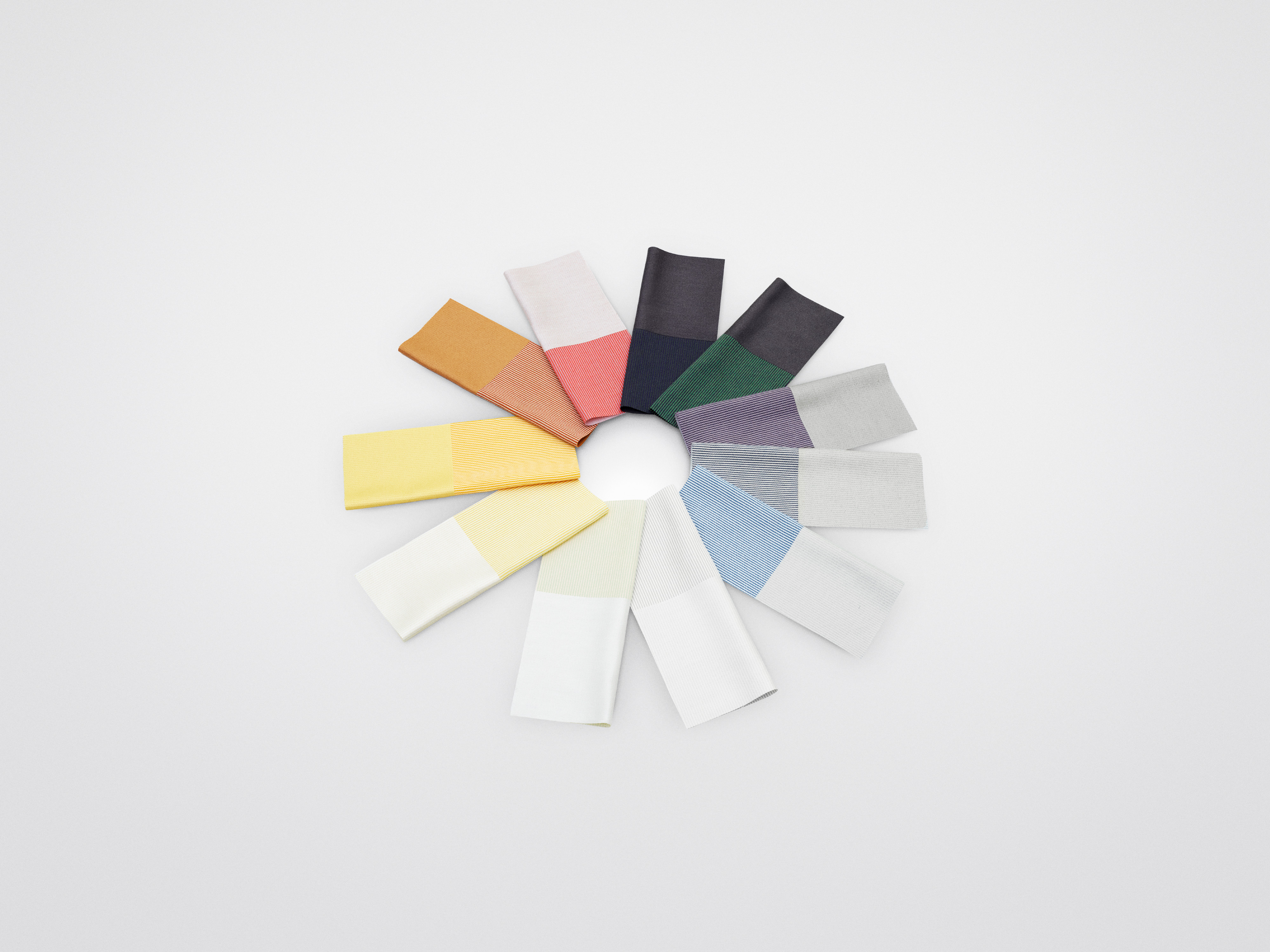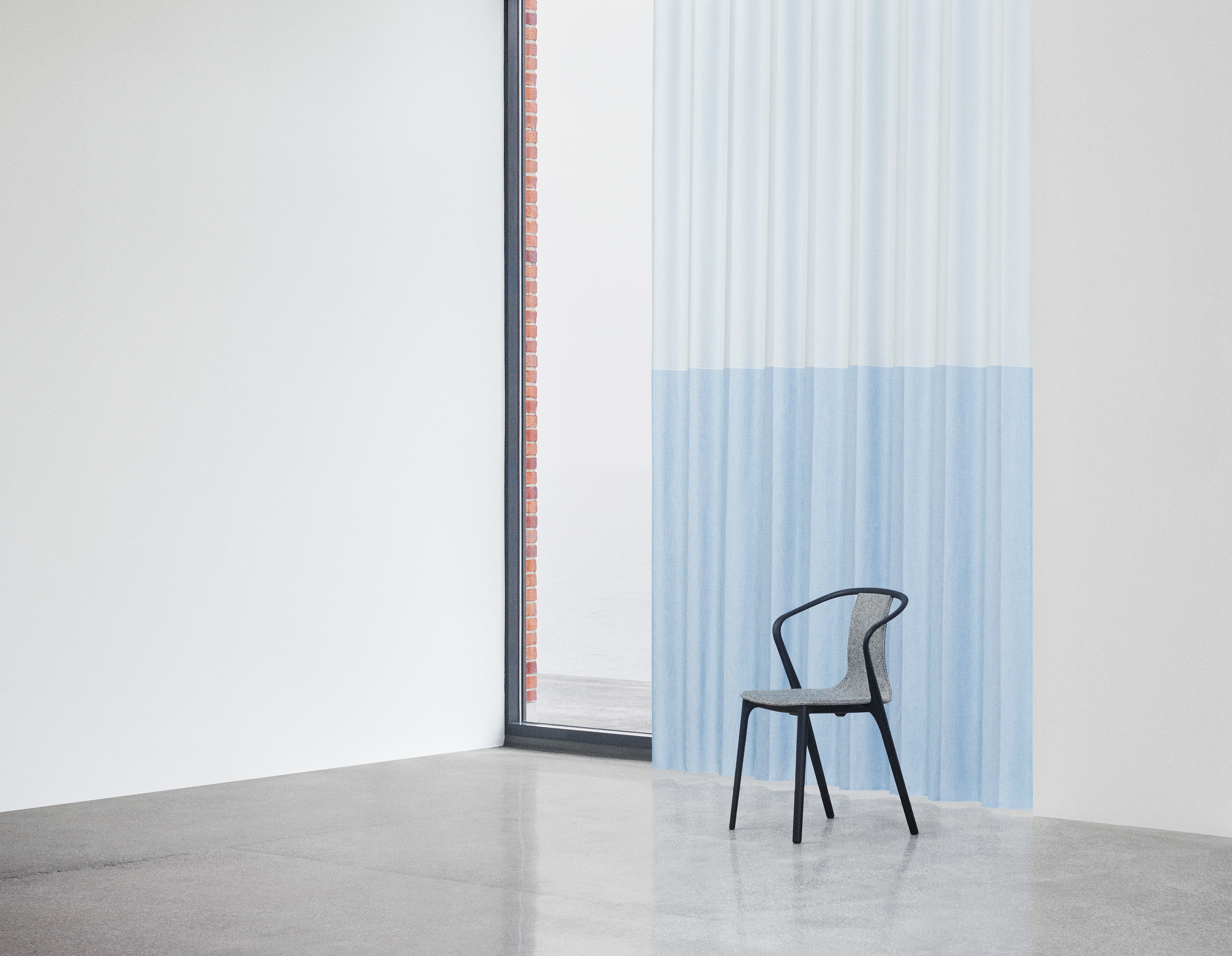Diorama for Kvadrat, 2019
MO D(K) 19
An evolution of the Panorama design, Diorama features a unicoloured horizontal block stripe, which in return is complimented by subtle vertical pinstripes. These run from the middle to the bottom of the design. As light travels through the fabric, the pinstripes appear to emerge from its surface, creating a vibrant surface with optical colour blends.
Fittingly, the name of the textile refers to a type of picture-viewing device of the 1800’s, which was created by painting on both sides of a transparent canvas. Almost unicoloured, the pinstripes explore perception and contrast: some combinations are bold and unexpected, while others are more tone-on-tone. Due to the weave, they can be seen from the backside of the curtain. Like Panorama, Diorama’s palette consists of earthy, subtle hues together with richer, brighter tones.
100% Trevira CS, 325 cm wide, 11 colourways


